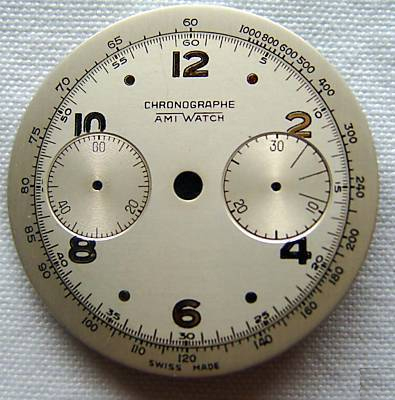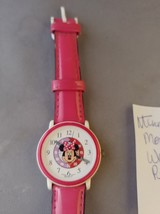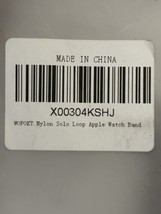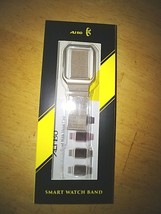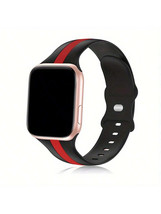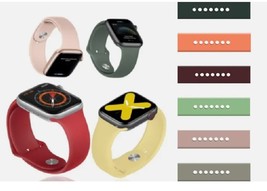Landron L48 NOS AMI Chrono Wristwatch Dial and 49 similar items
Landron L48 NOS AMI Chrono Wristwatch Dial 32mm, 1940s
$1,019.87 MXN
(It may be possible to pay only $48.94 instead of $54.99 when you
use your bCredits at checkout)
Sign up and get $15.00 bCredits free to use at checkout and another $5.00 bCredits when you make your first purchase. More info
Share & earn! Sign in, share this or any listing, and you’ll get commission when it sells.
Learn more
View full item details »
Las opciones de envío
La política de devoluciones
Protección de compra
Opciones de pago
PayPal accepted
PayPal Credit accepted
Venmo accepted
PayPal, MasterCard, Visa, Discover, and American Express accepted
Maestro accepted
Amazon Pay accepted
Nuvei accepted
View full item details »
Las opciones de envío
La política de devoluciones
Protección de compra
Opciones de pago
PayPal accepted
PayPal Credit accepted
Venmo accepted
PayPal, MasterCard, Visa, Discover, and American Express accepted
Maestro accepted
Amazon Pay accepted
Nuvei accepted
Rasgos del artículo
| Categoría: | |
|---|---|
| cantidad disponible: |
Sólo uno en stock, para muy pronto |
| Condition: |
Unspecified by seller, may be new. |
Detalles del anuncio
| Envío de descuento: |
Elementos enviados después de la primera en el apartamento de $0.01 |
|---|---|
| Publicado en venta: |
Más de una semana |
| Artículo número: |
44040790 |
Descripción del Artículo
New Old Stock AMI Chronograph Wristwatch Dial, 1940s
Diameter: 32 mm
Caliber: Landeron L48 movement and derivatives of this caliber
History of Wrist Watches
The 20th century began with a major breakthrough: The Frenchman Charles Edouard Guillaume invented a material called “Invar,” a nickel-steel alloy. (Guillaume was awarded the Nobel Prize for Physics in 1920.) Invar (derived from “invariable” due to its particular characteristics) was the ideal material for balances as its coefficient of expansion is 15 times lower than that of steel.
Until today, watch companies are trying to improve the balance's and the spiral's temperature stability. “Glucydur” is another extremely stable material, it is a copper-glucinum alloy.
Furthermore, companies developed special compensation mechanisms that are more complex than the simple screws on the balance ring, e.g., Patek Philippe's “Gyromax” balance with eight weights - adjusting this balance is definitely not a job for a week-end hobby horologist!
Around the turn of the century, the good old pocket watch got competition: People actually started to wear timepieces on their wrist! Watchmakers were horrified: The strain of the continuous movement, the dirt, the humidity, the shocks - who would, in his right mind, ever subject something as delicate as a watch to these influences?
Today, we know the answer: After one generation, about thirty years, practically everybody! The new challenge led to new solutions, and within this one generation, everything that you could ever wish for in a watch had been achieved - in a wristwatch! Automatic winding, absolutely waterproof cases, new shock-protection mechanisms, it was all there.
Initially, wristwatches were simply pocket watches with lugs, often with ladies' size movements (9'''). (The tradition of putting a pocket watch movement into a wristwatch case still continues with IWC's oversized “Portugieser” models.) Gradually, however, watchmakers faced the challenge of making small and precise movements. While an oscillating frequency of 18,000 a/h had been sufficient for pocket watches for virtually hundreds of years, fast-beat movements were developed for wristwatches to allow for higher precision. Today, the standard is 21,600 or 28,800 a/h; Zenith's “El Primero” with its 36,000 a/h is still unique and marks the peak of this development.
|
Why are we showing these items?
Search Results
Wristwatch, watches, parts & accessories"wristwatch" Category "Watches, Parts & Accessories"
|

-
Refine your browsing experience
We can show you more items that are exactly like the original item, or we can show you items that are similar in spirit. By default we show you a mix.
Este artículo ha sido añadido a su carrito
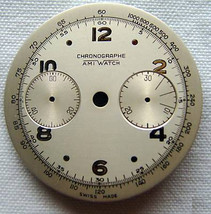 Landron L48 NOS AMI Chrono Wristwatch Dial 32mm, 1940s added to cart.
Único disponible en stock
Landron L48 NOS AMI Chrono Wristwatch Dial 32mm, 1940s added to cart.
Único disponible en stock
Ver el carro o seguir comprando.
 Por favor, espere mientras termine de agregar este artículo a su carrito.
Por favor, espere mientras termine de agregar este artículo a su carrito.
Get an item reminder
We'll email you a link to your item now and follow up with a single reminder (if you'd like one). That's it! No spam, no hassle.
Already have an account?
Log in and add this item to your wish list.


